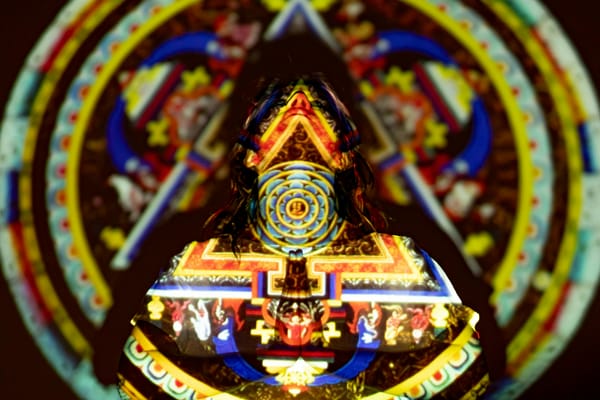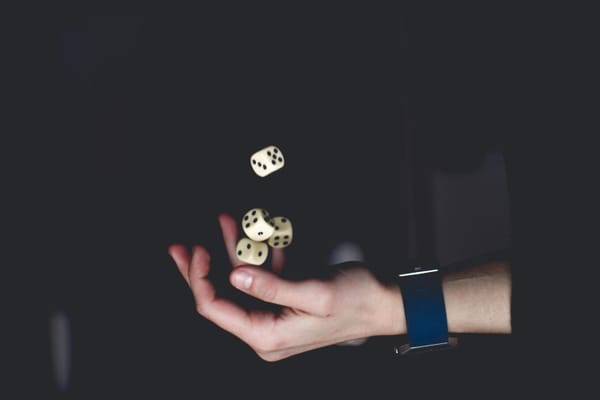Five Books on Mathematical Thinking and Its Beauty
Mathematics is largely the history of mathematical problems, but it also has a story that avoids equations, formulas, or theorems.

By our twentieth anniversary, most of us have barely walked into college, with a rather vague idea about our future. Évariste Galois had already solved one of the oldest problems in mathematics, by inventing new tools that eventually sparked new research for decades. He died in 1832, five months after reaching twenty, challenged to a duel for a lady’s attention.
There are books featuring mathematics which show that this seemingly abstract domain is closely related to human life and experience. After all, there can be no mathematics without mathematicians, and the biographies of some researchers could be as spectacular as the impact of their discoveries. In turn, the impact often goes beyond theories and theorems — otherwise, there wouldn’t be applications of mathematics or research into the psychology of learning that focuses on the abstract nature of mathematical objects and truths.
I rarely enjoy lists, but 5 is a prime number, so here are five books featuring mathematics, which I guarantee you won’t be reading with pencil and paper to understand equations, because you won’t find any. But if you do take notes, I would be curious to learn what drew your attention — so let me know in the comments or reply to this newsletter.
A Mathematician’s Apology, G. H. Hardy (1940)
Godfrey Harold Hardy was a Cambridge professor and a researcher who had strong opinions on mathematics, including his own work. He maintained until his last breath that the mathematics he spent his life on had no practical application. Furthermore, he titled the courses he published and taught A Course in Pure Mathematics. But Hardy was not really an elitist, his belief did not imply that mathematics is above all domains of knowledge. He simply preferred to separate mathematics from its applications, such as natural science. When one uses an equation to build something, that’s an application — but that need not preoccupy a mathematician.
A Mathematician’s Apology, his lengthy essay published in 1940, is not a justification. Hardy doesn’t offer excuses or defense for his field of study, as the title might suggest. His convictions are presented as a personal creed, a raison d’être, in which the British author shows the big picture that he sees, including art and knowledge. In his view, mathematics is closer to arts than one may think, and he even proposes an aesthetics criterion for theories and theorems. “There is no place in the world for ugly mathematics” he writes, in a rather confessional than authoritarian voice.
Pi in the Sky, J. D. Barrow (1992)
Belief in mathematics is also at the core of this second book, by the mathematician and physicist John D. Barrow. But instead of being personal it claims to be universal, traversing history and geography. As its subtitle suggests Counting, Thinking, and Being, the author follows the evolution of the concept of number throughout history and cultures.
Barrow’s book is not mystical, nor does it have the personal tone of Hardy’s Apology. Instead, it follows the historical evidence of the role of numbers and other mathematical objects through millennia. More generally, he writes about the role of mathematics as a tool for thinking, with strong cultural and social influences that go both ways. The author highlights famous research into the understanding of infinity, especially through Georg Cantor’s works, as well as the construction and conceptualization of Platonic solids, which spanned mathematics, natural philosophy, and art.
Here are two examples that focus on numbers and their understanding in two completely different cultures: the Amazonian tribe known as Botocudo and the Pythagoreans.
The Botocudo language does not contain words for numbers greater than four. Instead, when they need to express larger quantities, they simply point to their hair, implying something larger, seemingly innumerable.
The Pythagoreans had a different approach, attributing virtues and personalities to numbers 1, 2, 3, and 4. Thus, 10 was not only their sum, but also expressed their combined powers — perfection. The numbers were sometimes represented graphically as a triangle called tetraktys, displaying them in layers: one at the top, two below, then three and four further below, which looks similar to the upper part of Pascal’s triangle.
The Equation that Couldn’t Be Solved, M. Livio (2006)
This book sparked my curiosity for algebra, because it shows the close connection it has with symmetry, in art, physics, and chemistry. Thus, I recommend it whenever I can, but I’m confident one can read it for multiple other reasons.
It sketches the biography of two genius mathematicians — and I don’t use this word lightly —, Évariste Galois and Niels Henrik Abel, whose work ended a search started more than four millennia ago. Galois died aged 20 and he was mostly self-taught, as he failed the admission to École Polytechnique and not many people read his papers, let alone understand them. Abel died at 26, traveling a lot to find his place, but his frail health didn’t cooperate.
They worked in parallel, being mostly unaware of one another, but their efforts focused on solving equations of degree greater than or equal to five (that is, equations that contain the term x5).
Since the Babylonians, simple equations were useful for economic problems, but geometry stimulated the use of quadratic and cubic terms for areas and volumes. Higher degrees evolved naturally but solving them was a totally different discussion.
During the Renaissance mathematicians participated in public duels for solving such equations, because there were no general formulas. Whoever discovered solutions for special cases kept them in high secrecy, thinking that they would have a great advantage over their challenger. The stakes were also high, as the winner was almost guaranteed to get a professorship at a local university, whereas the loser often had to flee town, since his honor and public image had been shattered.
Galois and Abel showed that these duels were inherently unpredictable and could have easily continued. Equations of degree five or higher could not be solved through a general formula. Only approximations and ad hoc formulas exist, but nothing general as for the quadratic for example. They had to create a new branch of mathematics, group theory, which is now essential not only in algebra and geometry, but in physics and chemistry as well.
Mario Livio, an American mathematician of Romanian origins, combines the history of equations with the amazing and tragic stories of two brilliant young minds. His book is an accessible presentation of a modern theory that combines art with mathematics and natural science.
Les Rêveurs Lunaires, Cédric Villani (2015)
Until recently known as “The Lady Gaga of Mathematics”, Fields medalist Cédric Villani wrote a book featuring four short biographies of brilliant researchers of the past century: Alan Turing, Werner Heisenberg, Léo Szilard, and Hugh Dowding. The presentation is also surprising: Villani collaborated with the artist Edmond Baudoin to put together a comic book, where the biographies of the four are filled with symbols and metaphors.
The lonely Alan Turing, who created the mathematical principles of programming languages and software, appears haunted by infinite strips of binary numbers, while clutching Porgy, his teddy bear that he received as a Christmas gift from his parents. The physicist Werner Heisenberg is shaken by the uncertainty of fundamental physics that he himself proved mathematically. His colleague, the Hungarian Léo Szilard, has his own demons emerging from the nuclear reactions he studied and then led to so much destruction. Finally, the RAF pilot Hugh Dowding, who defended the British from Hitler’s invasion, was often visited by the spirits of his dead brothers in arms.
To the best of my knowledge, the book is not translated in English, but Villani is a world-renowned teacher and keynote speaker who often presents scenes from the history of mathematics. So if you can’t read French, you could, for example, watch his TED Talk titled “What’s So Sexy About Math?”.
Where Mathematics Comes From, G. Lakoff, R. Núñez (2000)
Finally, I recommend a book where mathematics is not presented from within, through researchers and their ideas, but instead as a part of the psychological mechanisms and brain circuitry used for learning and understanding the world.
The linguist George Lakoff started his research on this topic at the beginning of the 1990s. He co-authored the book Metaphors We Live By with the philosopher Mark Johnson in which they argue that the metaphor is equally useful in understanding mathematics. As an example, in many languages there is an implicit association between “up” and “better” or “more”. The very adjective “superior” suggests this, as well as expressions such as “high hopes”, “high level” or “escalation [of conflicts]”. Therefore, their argument is that the abstract analogy linking the concepts in a metaphor is equally useful in scientific or mathematical contexts.
Immediate applications are in teaching mathematics, in close connection to natural language or literature. Conceptually speaking, an idiom such as “high hopes” uses the same kind of analogy like “high-order differentials”, hence teaching it could use psychology based on similar neural circuitry for a better understanding.
Lakoff collaborated with the psychologist Rafael Núñez for this book precisely for such applications. They show how abstract mathematical objects, such as set theory, infinity, or induction could be connected to intuitive constructions, inspired by natural language and the physical world, even one’s own body. This is precisely the kind of connection the book’s subtitle suggests: How the Embodied Mind Brings Mathematics into Being.
Now, 5 is a prime number, but so is 2. Furthermore, 5 + 2 is still a prime, so let’s add two short bonus recommendations.
Bonus 1: Belief in God, T. J. Mawson (2005)
Perhaps a book of philosophy of religion is an unexpected addition to the list here, but Tim J. Mawson’s work is a great example of eloquence, clarity, and attention to detail in constructing an argument. Plus, it’s an excellent showcase of style that greatly fits both academia and general audiences.
An Oxford professor of history and theology, Mawson analyses the classical attributes of God (omniscience, omnipotence, omnipresence, goodness etc.), as well as the problem of evil. The author aims to study whether it makes sense, logically and almost mathematically, to speak of the very concept (not even “being” or “entity”) of God, while paying close attention to definitions, their implications, and arguments.
If you take pleasure in listening to Stephen Fry or other British authors that are sophisticated, rational, and a bit posh, I think you’re going to love Mawson.
Bonus 2: A Sweeping History of Mathematics
Finally, if you do want to read a deep and wide history of mathematics, from the Babylonians until at least the twentieth century, here are two more books that don’t contain formulas or complicated theorems. Instead, they put mathematics in its historical context, with slightly different focuses, but with similar clarity and depth.
A History of Mathematics (1968) by Carl Boyer and Uta Merzbach, is my recommendation for a focus on the European continent.
The Crest of the Peacock: Non-European Roots of Mathematics (1991), by George G. Joseph, is what I suggest you should read if you’re more interested in the Arab, Chinese, and Indian heritage of mathematics.
If you’ve read any of the books I mentioned here or want to recommend some yourself, just reply to the email newsletter or write a comment on the website. There’s no such thing as too big of a library.





